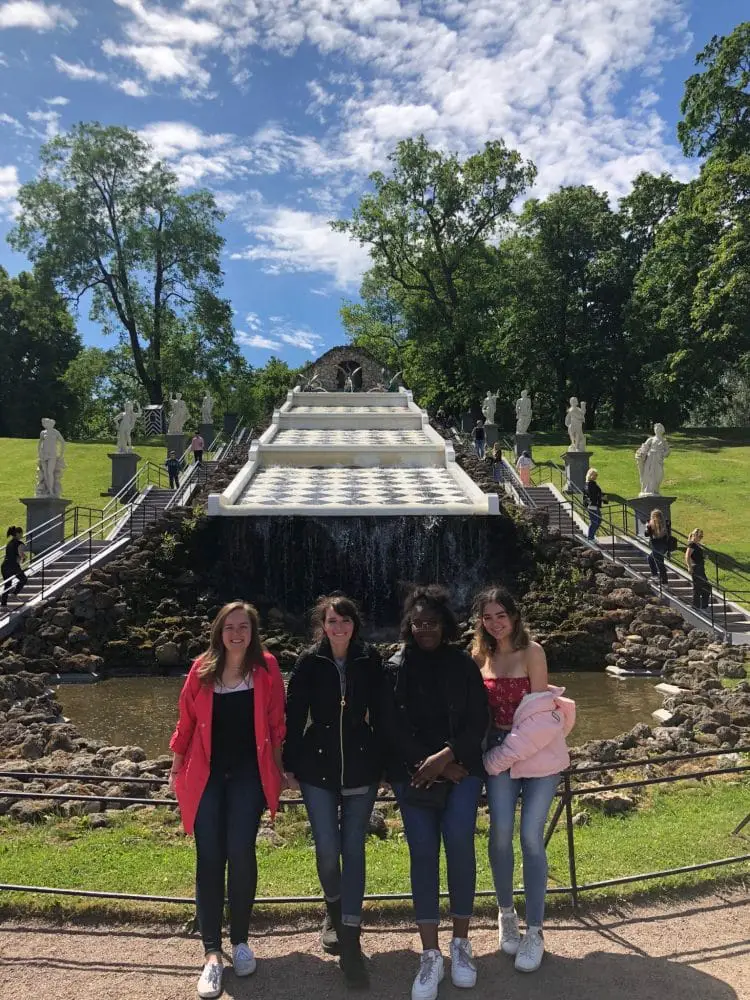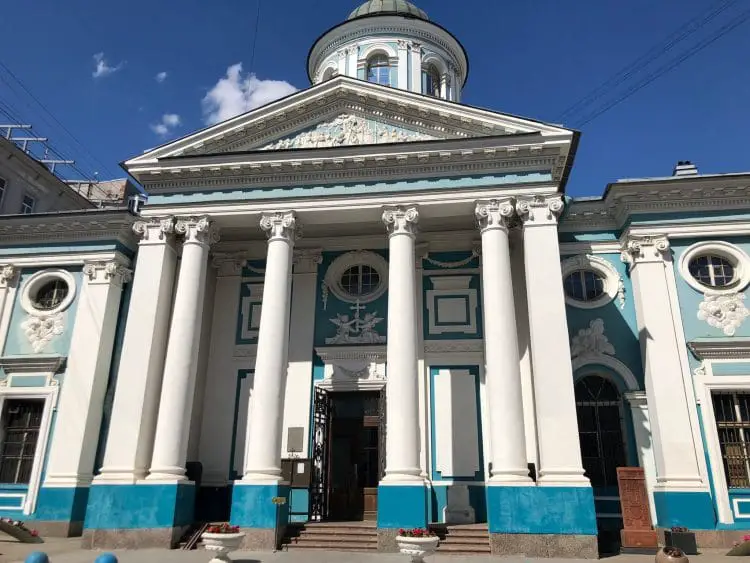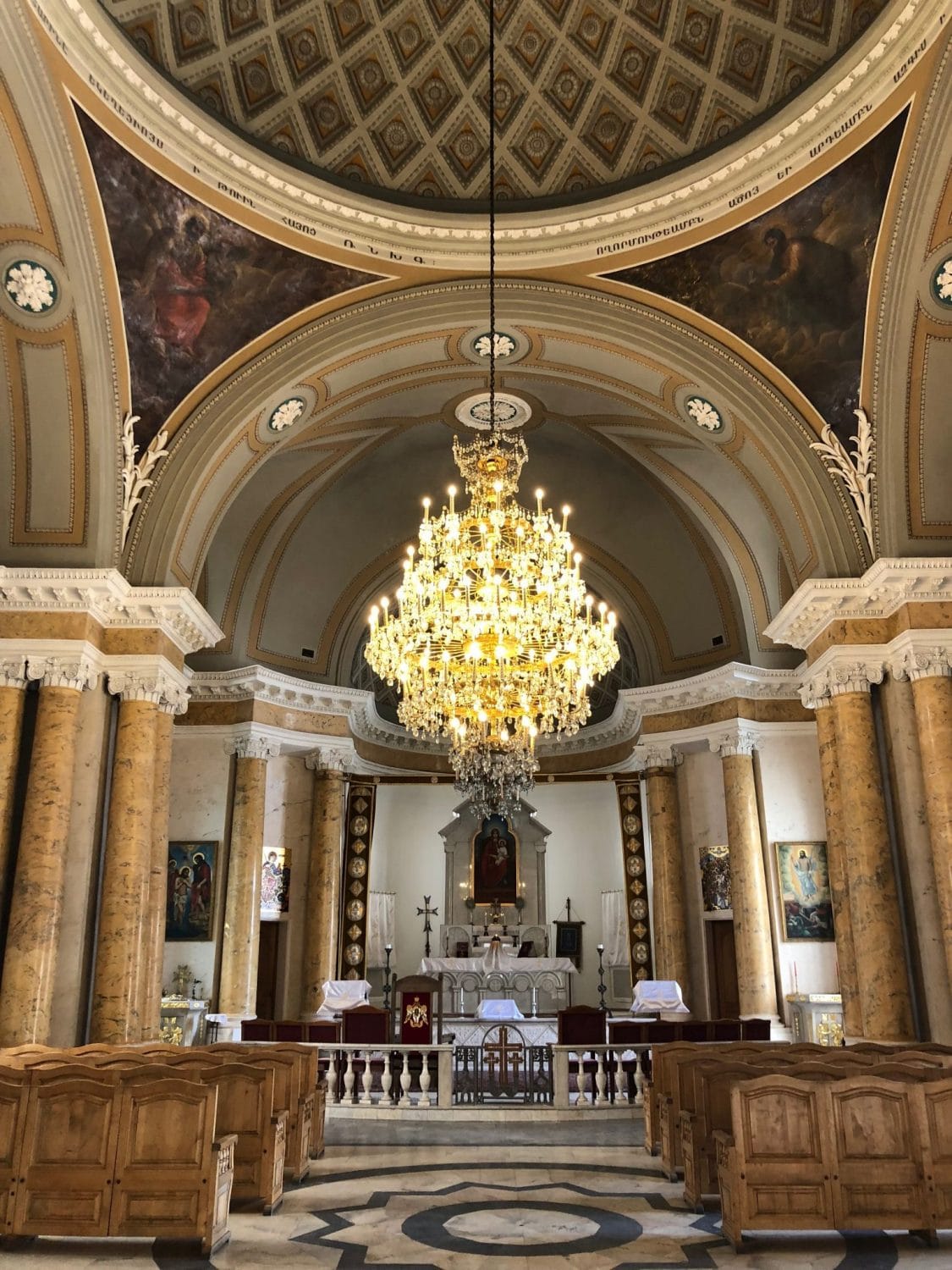Studying abroad in Russia as an Armenian American was eye-opening. I am a Russian Studies major that has always been interested in Russian culture and history – which are deeply intertwined with Armenian culture and history. After a summer abroad, viewing life in St. Petersburg through an Armenian-American lens, I feel that I have come to better understand not only Russia, but also better understand the rich history and surprisingly broad cultural footprint of the roots of my own identity.
My family immigrated to the United States in 1996, in the wake of raising a newborn during the economic hardships that rocked the newly post-Soviet world. I was born two years after my family immigrated, growing up in a household that both celebrated our Armenian culture, language, and heritage, and that adjusted to life in the U.S. If anything, living so far away from the motherland was a major push for me to be raised immersed in the Armenian language and culture, and I’ve found that such efforts are echoed in the lives of those living in diasporas around the world as well.

Armenians have been present in Russia since the Middle Ages, working as merchants and artisans. Armenia, within its current boundaries, was part of Russia and then the USSR from 1828 to 1991. Further, many Armenians fled their homes in the eastern part of the Ottoman Empire under the Armenian Genocide in 1915 – and many settled in Russia. Today, Russia is encouraging more Armenians to immigrate as part of a program to attract Russian-speaking immigrants. Russia is now home to the largest number of diasporic Armenians in the world.
Thus, the fact that there’s a sizable population of about 20,000 Armenians in St. Petersburg did not surprise me – migration and diaspora long been common parts of the Armenian experience. I would run into Armenians regularly, hearing tidbits of my language in the bustling crowds along Nevsky Prospekt. On the metro’s green line on the way to Krestovsky Island, I caught a funny conversations that some men were having, switching between Armenian and Russian, about the lack of Middle Eastern cooking ingredients at their local grocery store. I understood their concern about food being cooked just the right way — in coming abroad, I quickly found myself seeking out Armenian restaurants in St. Petersburg, borne out of homesickness and seeking the flavors of my upbringing.
I mentioned this longing to one of my program advisors with SRAS, the company I studied abroad through, and the advisor immediately recommended an Armenian restaurant called “Kilikia” (named after the former Armenian kingdom that was later swallowed up by the Byzantine, and then Ottoman, empires), which was only a few blocks away from campus. I invited others on my program to come along and, a few days later, my American friends and I embarked on a journey: for them, a new experience trying out Armenian cuisine; for me, finding a familiar space in the midst of the new world I’d be living in for the remainder of my study abroad experience.
Exploring and stepping out of one’s comfort zone are important parts of study abroad. However, finding familiar pleasures while abroad can also be rewarding and assuage the pangs of homesickness. I was also curious to view how Armenian culture was viewed and presented in Russia, given the long history between the two countries. Lastly, this was also an excellent opportunity to introduce my new friends to something new for them that I truly love.
I was even more excited when we got to the restaurant and I found it to be authentically Armenian. Armenian woven gorger (rugs), water jugs, and paintings of Mt. Ararat covered the walls, Armenian duduk (wooden reed) music played on the speakers in the background, and it just smelled like the food my grandmother makes. It was also a source of comfort hearing Armenian-Russian conversations float around the room from various tables. Obviously, with a sizable Armenian-speaking clientele, this place must be authentic enough to draw those who know what authentic means!

It was equally wonderful seeing my friends try Armenian cheese, lahmajoun, khachapuri, Armenian barbecue (xorovats; known as shashlik in Russian), and so much more. Khachapuri is particularly interesting as one of the better-known dishes abroad now. I’ve been eating khachapuri my whole life, and its important to note that the traditionally Georgian dish has many variations, based on the different regions in and around Georgia. The khachapuri that is most popular in Russia is the (Georgian) Adjarian khachapuri – the famous bread boat filled with egg and cheese. The Armenian take on the dish is typically a flaky square or triangle of leavened dough filled with feta cheese and seasoning.
Most of my friends weren’t fans of dill, nor the yogurt drink tahn, but they loved the homemade lavash and almost everything else. I definitely overfed my friends, but that’s what marks a satisfying Armenian meal anyway!
Today, a significant amount of Armenians live in Russia, enriching the diverse country with their culture and history. Unfortunately, diversity and enrichment is not appreciated by all and Armenians have faced racial discrimination, with the post-Soviet period of the 1990’s being a particularly ugly period of this history. Today, however, integration of Armenians into Russian society has been improved thanks to the work that the Union of Armenians in Russia (UAR). The UAR located Armenian communities across the Russian Federation, and organized them so as to prevent assimilation, preserve Armenian identity, and make Armenian voices heard in Russian civil society. The UAR has expanded to include 67 chapters across 100 cities in Russia. Their work has been recognized at the highest levels of the Russian government and has been quite successful. In 2015, President Vladimir Putin congratulated the UAR on the 15th anniversary of its existence. He noted the positive work that the organization and its branches have done in improving the “harmonization of inter-ethnic relations in our country.”

I travelled in Russia while abroad – and found with pride that I could connect with Armenians almost anywhere there. A two hour train ride from St. Petersburg, for instance, in the ancient city of Novgorod, I hung back to adjust my umbrella and purse while on a tour of the city. While I was orienting myself, I heard a couple discussing, in Armenian, the best time to leave Novgorod to avoid traffic on the way back to St. Petersburg. My usual shyness evaporated, and I immediately introduced myself to them. It was quite funny, as most interactions I’ve had with Armenian strangers have been quite natural, in which I’ve felt like a younger cousin greeting an elder family member. I was brought into the fold quite quickly, with me taking pictures of the couple in front of a church, and being invited to dinner at their home in St. Petersburg the next weekend.
I developed a friendship with this family – I was introduced to their daughter who is slightly older than me, and we still communicate on WhatsApp every now and then. I became familiarized with the Armenian community in St. Petersburg through them, learning that many youth are active in St. Catherine’s Armenian Church on Nevsky Prospekt and that many immigrants have come to St. Petersburg directly from Armenia, looking for better jobs in the bustling city.

It was a remarkable experience interacting with this family. I made friends borne out of a cultural-linguistic connection, and I learned more about the Armenian diaspora. I made sure to visit St. Catherine’s Church as well, where I connected with the baker working adjacent to the Church and purchased traditional sweet bread (gata) at fluffy bread (matnakash). I also bought Armenian children’s books for my young brother in the Church gift shop, obtaining an invitation to come to the next youth meeting at St. Catherine’s.
Christianity is an important factor in the collective Armenian cultural and historical identity. Armenia was, in fact, the world’s first Christian state – starting in 301 A.D., when King Tiridates III was baptized and officially Christianized his people. The fascinating history of how Armenians managed to remain Christian even after much of their homeland as taken over by Muslim states is one that any Christian should find well worth looking into.
Armenians in Russia have built over 45 churches – with particular concentrations of them where major Armenian communities reside: Moscow, St. Petersburg, and the Southern Caucasus. Armenian churches in Russia are a safehold for religious practice, social mingling, and Armenian identity in general – with books, baked goods, and language all often close by.

My experience abroad in Russia was thus dual in nature, and it was my small encounters with Armenians that added to the richness of studying abroad in Russia. I was proudly American, and proudly Armenian, in my existence there. Russians definitely saw me as Armenian first, and I had many a conversation about my background. These conversations were deepened when I explained that I’d actually been born and raised in Los Angeles, and not the Armenian village of Armavir like the rest of my family. “Почему вы здесь учитесь?” “Why are you studying here?” was a common question I’d get. At the end of it all, an answer to that question was to learn about Russian culture and history, while digging for tidbits of the Armenian experience that lay beneath it all.
Identity is challenging to pin down and arguably can’t ever really be precisely explained, but I was excited to see my Armenian background reflected in pockets of St. Petersburg.





